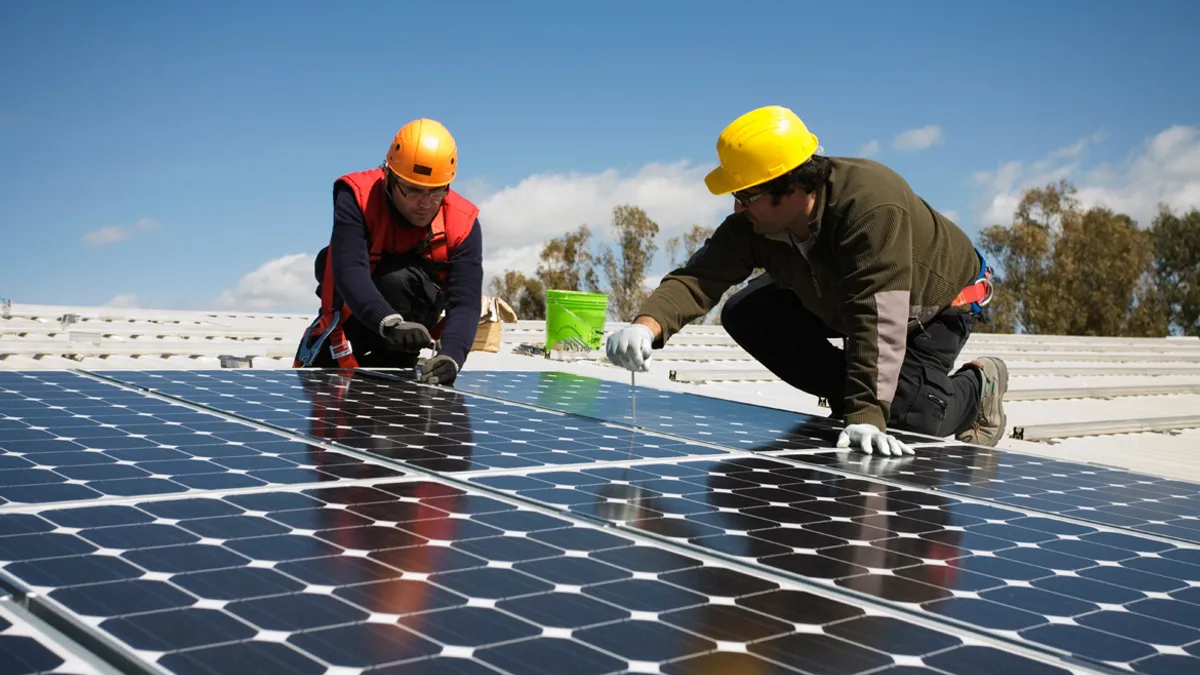Dive Brief:
-
Tucson Electric Power has proposed a new net metering plan that reduces payments to customers with rooftop solar. The Arizona utility says the change is aimed at balancing benefit to solar customers with ensuring all customers equitably pay for their use of the grid.
-
TEP wants to purchase customers' excess solar output from new rooftop systems at the same price it pays for energy from large local solar arrays, rather than the retail electric rate. A typical customer with rooftop solar would see their bills increase about $22 per month, the Arizona Daily Star reports.
-
The utility said the resulting credits would allow customers to reduce their electric bills by going solar, even as they pay the same price as other customers for the energy they use from TEP.
Dive Insight:
Tucson Electric Power is proposing a new solar rate it believes will more equitably reflect the cost of serving customers who generate some of their electricity with rooftop solar panels. The solar hike comes on the heels of a recent increase in fixed charges for solar owners at Salt River Project, another Arizona utility, but would not affect current solar customers.
"Users of rooftop solar power systems rely just as heavily on TEP's electrical system as other customers — more heavily, even, since TEP must manage their systems' intermittent output," the utility said in a statement. "But they pay far less for TEP service under current rates, due in part to net metering rules that allow them to exchange excess solar energy for free, on-demand utility power."
TEP said that residential customers who go solar under the proposed plan and who use 900 KWh/month and install a 6-KW array would save more than $80 per month on their average electric bill — about $22 less than they would save under current net metering requirements.
"Our proposal will allow the continued expansion of southern Arizona's solar energy resources while preserving safe, reliable and affordable electric service at more equitable prices for all of our customers," said David Hutchens, TEP's president and CEO.
If TEP's proposal is approved by the Arizona Corporation Commission, it would not affect customers who already have solar power systems or those whose requests to connect new solar arrays to TEP's grid are submitted by June 1, 2015.
PV system prices have fallen steadily since then to less than $3 per watt, driving annual increases in the installation of both customer-owned and leased PV systems. About 7,900 of TEP's residential customers now have solar power systems, and more than 600 customers have applied already this year to connect new PV arrays to TEP's grid.
Without changes to rates or the net metering plan, TEP said continued solar growth would force significant rate increases to offset increasing subsidies to users of rooftop solar systems.
"We're exceeding our renewable energy goals, but that won't mean much if we're forced to compromise the affordability of our community's electric service," Hutchens said. "Our proposed net metering plan would promote both sustainable power and a sustainable electric grid."
TEP and SRP are not alone in increasing payments from solar customers. Across the country, utilities have opposed NEM with the argument that when customers install solar, they stop paying their fair share of grid infrastructure costs. Distributed energy supporters respond that in most cases, solar customers still pay their utilities enough to cover grid costs.















